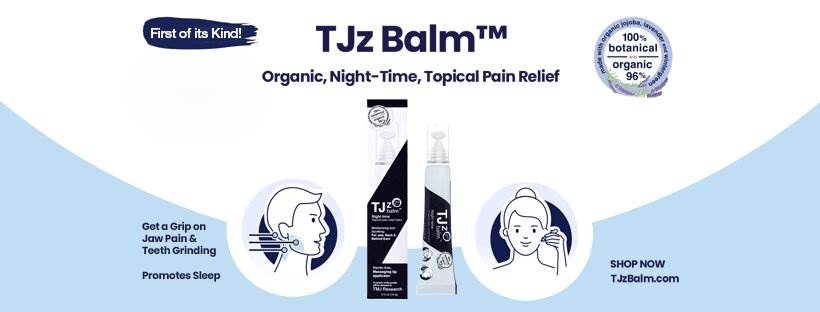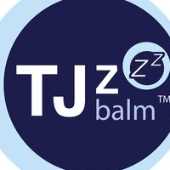
07-Jul-2021
TMJ Pain Relief Solutions
Are you looking for safe and non-invasive ways to relieve jaw pain from the TMJ? Both oral non-prescription and prescription medications may be recommended by orofacial pain specialists in problematic cases of TMJ disorders as TMJ pain relief solutions until the underlying conditions are addressed. Prescription medications such as anti-inflammatories, muscle relaxers, steroids, and painkillers have been used to treat chronic temporomandibular joint pain. However, long-term use of these drugs can have detrimental effects on your health.
Especially concerning is the use of prescription opioid drugs including codeine, hydrocodone, Vicodin, oxycodone, morphine, propoxyphene (Darvon), and fentanyl as TMJ pain relief solutions. This type of drug can cause severe addiction. Side effects include constipation, nausea, sedation, drowsiness, foggy brain, itching, dizziness, depression, sweating, weakened immune system, and slowed breathing.
Oral non-prescription painkillers like aspirin, acetaminophen (Tylenol), ibuprofen, and naproxen are the most recommended by doctors for TMJ pain relief. However, they too, have side effects.
1. Long-term use of aspirin can cause stomach bleeding and lead to stomach ulcers. Never give aspirin to children because of the risk of a life-threatening condition called Reye’s syndrome, which attacks the liver and brain. Aspirin is a type of NSAID (non-steroidal anti-inflammatory drug). It’s one of the oldest of this classification of drugs.
2. Too much acetaminophen, especially if taken while drinking alcohol, can cause liver damage.
3. Ibuprofen, a more recent NSAID, can cause stomach or kidney problems.
4. Naproxen is also an NSAID with similar side effects.
Problems with the temporomandibular joint (TMJ) are called temporomandibular joint disorders (TMD) or TMJ disorders, which cause pain in the temporomandibular joint and muscles. Symptoms may not be long-lasting for some people, but for others the pain and discomfort caused by movement of facial muscles can be chronic, exacerbated by constant jaw clenching and teeth grinding. The act of teeth grinding and clenching is called bruxism. These brux behaviors are linked to stress and anxiety. Often people are unaware of these behaviors because they happen during sleep. They wake up with TMJ headaches, TMJ jaw pain, neck pain, and sometimes broken or chipped teeth.
Temporomandibular (TMJ) disorders can be caused by arthritis, dislocations, injuries, or infections of the temporomandibular joint. The skull and the lower jaw meet at the temporomandibular joint, which is where painful clicking or blocking of the jaw, TMJ headaches, neck pain, and ringing in the ears originate.
It is important that an orofacial pain specialist rules out other conditions that may be causing TMJ symptoms. If there are concerns about underlying conditions, an MRI may be recommended.
New reports state that temporomandibular joint (TMJ) pain relief is possible with non-surgical treatment options and that invasive procedures should be the last resort for treatment.
There are many ways to reduce suffering from jaw pain. To ease TMJ pain, minimize wide jaw movements such as chewing, yawning, singing, and yelling. To minimize TMJ pain, sleep on your back or use a pillow to support your neck. The calmness of the jaw can reduce stress and alleviate discomfort associated with TMJ inflammation. Rest and relaxation are important during the treatment and healing process.
TMJ specialists such as physical therapists and massage therapists, trained in jaw muscle release and temporomandibular joint treatments can help people obtain long-lasting relief from jaw pain, TMJ headaches, and other types of TMJ pain. These types of massage and muscle-release treatments along with self-care home practices may be the safest and most effective TMJ pain relief solutions.
Other holistic pain management approaches for temporomandibular joints include relaxation exercises, jaw exercises, massage therapy, physical therapy, medication, dry needling, tongue positioning, and proper teeth protection.
There are a variety of topical pain relief creams and ointments, with varying ingredients and potencies. However, they are not formulated for the delicate skin around the jaw, neck, and behind the ears. They are used for the body and not recommended for the face. Homeopathic remedies are also available. However, there is little evidence to support homeopathy as an effective TMJ pain relief solution.
TJz Balm is a first-of-its-kind organic OTC (over-the-counter) topical pain relief medication made with seven purposeful botanicals that’s effective in relaxing the muscles and joints and provides a skin-safe formula for the sensitive area around the jaw, neck, and behind the ears. This is a home-care product that is available through your TMJ specialist or can be purchased online at tjzbalm.com.
Make an appointment with your orofacial pain specialist or TMJ specialist to learn more about your TMJ disease and its treatment and checkout tjzbalm.com.

Health
TJz Balm is a First Of Its Kind Organic and 100% Botanical Night-Time Topical Pain Relief Balm that soothes and moisturizes the jaw area. Its hands-free massaging applicator allows for deep relaxation and penetration. Effective relief, yet safe and moisturizing for the sensitive skin around the jaw, neck, and behind the ears.
Join Our Newsletter
Subscribe to our newsletter to receive emails about new views posts, releases and updates.
Copyright 2010 - 2026 MindStick Software Pvt. Ltd. All Rights Reserved Privacy Policy | Terms & Conditions | Cookie Policy